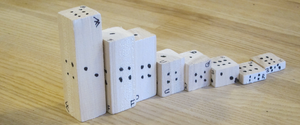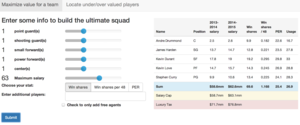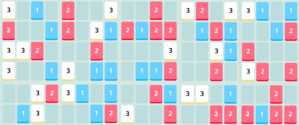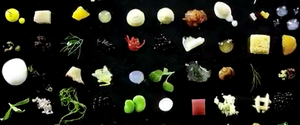Time to trade on the Monopoly real estate market
January 6, 2010
During our Monopoly exploits, another thing that we noticed was that, at the conclusion of the game, there were still several properties left that had not been purchased. In fact, no one even had a chance to buy some of these properties because no one landed on them! This fact was particularly detrimental for one of the players in our game, He-Who-Must-Not-Be-Named, who never had an opportunity to trade any properties with any other players before being knocked out of the game (He-Who-Must-Not-Be-Named only had a few properties and was waiting for the remaining properties in his property colors (e.g., Park Place) to be purchased from the bank before trading). Was He-Who-Must-Not-Be-Named's bad fortune a consequence of poor strategy of waiting for the blue properties before trading or plain old bad luck?
For our purposes, we can quantify how quickly the properties of a particular color become eligible for trading by quantifying the minimum “time” that it takes for all of the properties of a particular color to be owned. We can accomplish this by making two simple assumptions. First, each player has unlimited money and buys a property as soon as possible. This is a reasonable situation in games with a reasonable number of players (say, four or more) where the limiting factor is not money, but the likelihood that you land on an unowned property. Second, each player tries to get out of jail as quickly as possible, a reasonable expectation at the beginning of games when players are eager to buy as many properties as possible. We then simulate 1000 Monopoly games and quantify the time—the number of turns per player—it takes to own all of the properties.
To get a feel for our approach, we begin our analysis by first quantifying the time required to own all of the Monopoly properties (Fig. 1). One thing is immediately obvious; it takes less time (fewer turns per player) for all of the properties to be owned as the number of players are increased. Interestingly, it takes roughly 30 turns per player before all of the properties are owned in a four-player game (like ours). Assuming that each colored property set is owned in the same amount of time, this suggests that He-Who-Must-Not-Be-Named may have been at a disadvantage by waiting for Park Place before trading.
But this is not the whole story. As shown in Fig. 2, the blue properties are not owned particularly quickly relative to the other properties on the board, particularly for a four-player game like ours. This may be due in part to the fact that Park Place is the property that is landed on the least frequently since it is 7 spaces from Go To Jail. This analysis therefore suggests that He-Who-Must-Not-Be-Named's bad fortunate was, at least in part, due to poor stategy.
This analysis also reveals a few other interesting trends that can be incorporated into a player's trading strategy. For instance, the orange and red properties are systematically available for trading the quickest whereas the yellow, green, and purple properties are not, a consequence of where these properties are positioned relative to Jail. In contrast, the grey properties are owned in the least amount of time with six or more players. This is due to the fact that these properties are oftentimes owned within the first turn, which happens 15% of the time with six players and 41% of the time with ten players.
In the context of Monopoly, this analysis demonstrates that it may be more advantageous to pursue some property colors more aggressively than others, considering that they are owned earlier in the game. This analysis also reveals how one might change their strategy depending on the number of players in a game; when playing with six or more players, one might want to trade for the grey properties as aggressively as possible whereas when playing with fewer than six players one might want to trade for the orange and red properties as aggressively as possible.









